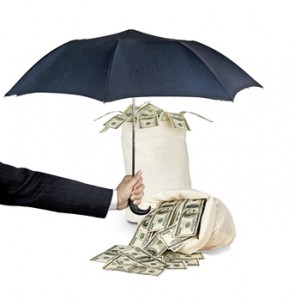The value of global assets invested in hedge funds has been slowly rising. It now stands above the $2 trillion mark. The demand is increasing despite the fact that average worldwide hedge fund returns showed a drop of just over 2 percent in 2011. Volatile world markets are causing investors to take a more cautious approach to the funds although they are not retreating from these investments. As much attention is now paid to the risk management of hedge funds as is paid to the portfolio and the manager. Assessing the risk of a particular fund is not always easy since so many different vehicles and instruments are now in use. A few indicators will help businesses to determine the potential risk of a hedge fund.
Market Correlations
One common measurement that is used to help determine the risk that a hedge fund presents is the performance of the fund when compared to the movements of markets during the same period. This is often called the downside capture. Hedge funds were originally designed to operate independently from the broader markets so that downturns or upswings would not affect the returns. Modern funds sometimes rely heavily on the markets and fail to diversify broadly enough. Funds that have a strong correlation to the movements of the markets are likely tied tightly to leading indicators. These might present high levels of risk depending on market conditions.
Leverage
The use of leverage is common in hedge funds. Officers in charge of risk management hedge funds are normally very cautious when determining the use of leverage. Despite this caution, the use of leverage has trigger problems and insolvency for several major funds. It is best to consider the leverage of a fund when attempting to assess risk. One misunderstood or poorly designed derivative could cause sharp and unexpected losses. It is important to understand that it is rare to find any hedge fund that does not use some form of leverage and that leverage a useful tool when applied properly.
Size
The size of the fund can sometimes indicate risk based on the history of the firm or management. Small funds are generally easy to manage and present little risk although they also have lower returns. The main risk comes from funds that receive a sudden influx of investment capital because of a soft close or a delayed close. This influx might cause dangerous over-diversification. It could also result in investments in risky vehicles that employ leverage. It is a matter of experience and personal opinion whether a hedge fund is growing too large.
Drawdown
Drawdown is a good measure of risk. This is a number that represents the difference between the highest recent return in the fund and a subsequent low period. The drawdown will show the amount of time that it took to lose the money. This type of analysis is also good when looking at how long it takes the fund to return to the previous high point. This will provide some information about long-term performance. It also shows what normal gain and loss cycles might look like. Drawdown is not a good measure of risk when used as a single metric, however, since other factors could skew the numbers so that they do not reflect accurate highs and lows.
[author] [author_image timthumb=’on’][/author_image] [author_info]Laura Waterdown understands the risks that come with managing hedgefunds. It is important to ensure that your business minimizes risk exposure. That is why she trusts the experts at R2 Financial Technologies. They offer a variety of services including consulting services, valuation services, and research to measure risk factor and gain risk intelligence. Visit their website today for more information.[/author_info] [/author]
